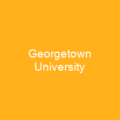Discovering Northeastern University: A Journey Through Time and Innovation
Northeastern University is a private research university with its main campus nestled in Boston, Massachusetts. Established in 1896 as an all-male institute, it has since evolved into a vibrant institution that now boasts over 38,000 students across nine schools and numerous programs.
From Evening Institute to Global Leader
How did Northeastern University transform from its humble beginnings in 1896 to the prestigious private research university it is today?
The history of Northeastern University began with an Evening Institute for Younger Men, established by directors of the Boston Young Men’s Christian Association. This institute held its first classes in 1898 and later expanded to include a School of Law, Automobile Engineering School, Polytechnic School, and more.
In 1916, after considerable debate and investigation, a bill was introduced to incorporate the institute as Northeastern College. The Co-operative School of Engineering was first authorized to grant degrees in civil, chemical, electrical, and mechanical engineering five years later. By 1920, the college had changed its name to Northeastern University to better reflect the increasing depth of its instruction.
Leadership and Growth
Who were some key figures that shaped Northeastern’s journey?
Frank Palmer Speare, a veteran educator, was inaugurated as the first president of the newly incorporated Northeastern College in 1917. Under his leadership, the university began admitting women and separated itself completely from the YMCA by 1948.
Asa S. Knowles, who served as president from 1959 to 1975, brought significant changes to the university. He broadened undergraduate offerings, increased graduate programs, modernized administrative structures, and created new colleges such as the College of Education (1953), University College (1960), College of Pharmacy and Nursing (1964), and Khoury College of Computer Sciences (1982).
Modern Era
How has Northeastern adapted to modern challenges?
Following World War II, Northeastern began admitting women. By 1975, the university had a local identity as an independent technical university serving a commuter and adult population. Under President Kenneth G. Ryder (1989–1996), Northeastern University grew into one of the largest private universities with around 55,000 students.
Richard M. Freeland’s presidency from 1996 to 2006 focused on recruiting high-quality students and improving academics. His $485 million construction program, reorganization of the co-operative education system, and expansion of marketing and fundraising efforts contributed significantly to Northeastern’s growth.
Joseph E. Aoun, who took over in 2006, implemented an Academic Investment Plan from 2004 to 2009, focusing on undergraduate education, core graduate programs, and research excellence. During his tenure, the university rapidly advanced in national rankings, placing 42nd in U.S. News & World Report’s best colleges and universities rankings.
Academic Excellence
What makes Northeastern University stand out academically?
Northeastern offers a wide range of academic programs, including 291 undergraduate majors, 36 PhD programs, and 264 other graduate programs. Grounded in liberal arts education with experiential learning opportunities, the university’s cooperative education program places nearly 10,000 students annually in full-time, paid positions.
The Honors Program selects students from the regular applicant pool based on their highest GPA and SAT/ACT scores. The Co-op/internship program launched in 1909 is one of the largest and oldest cooperative education programs in the world. Study abroad programs are available in Africa, Asia, Australia, Europe, and South America.
Research opportunities for undergraduate students are provided through various programs, with annual external research funding exceeding $78 million in FY 2007. The university is designated as an NSF Engineering Research Center in 2002 and received a grant of $12 million for a Homeland security research facility in 2010.
Facilities and Campus Life
What does the campus offer to its students?
Northeastern’s main campus is located on 73 acres along Huntington Avenue and Columbus Avenue, part of the Fenway Cultural District in Boston’s Fenway and Roxbury neighborhood. The campus was officially designated as an arboretum by ArbNet in 2019.
Landmarks include Krentzman Quadrangle, Centennial Common, the Marino Recreation Center, Ell Hall, Blackman Auditorium, Gallery 360, Dodge Hall, and the Interdisciplinary Science & Engineering Complex. Matthews Arena is a historic venue that has hosted numerous events since its opening in 1910.
East Village opened in 2015 as a new dorm building for freshmen and upperclassmen in the University Honors Program. Davenport Commons, International Village, and Lightview are other recent developments on campus. The university’s libraries consist of Snell Library, John D. O’Bryant African-American Institute Library, and NU School of Law Library.
Student Life
How do students spend their time outside the classroom?
Northeastern offers over 16 varsity teams, 30 club sports teams, and 400 student clubs and organizations. The university hosts six student-run a cappella groups that compete in the International Championship of Collegiate A Cappella.
The women’s rugby team finished third in the nation in Division II, while the men’s rugby team won the largest annual tournament in the US. The women’s rugby team placed 11th at the Collegiate Rugby Championship. The Club Baseball team won three straight New England Club Baseball Association championships from 2007 to 2009.
The Club Taekwondo team placed first overall in Division II for the 2018–19 season, and Northeastern defeated Boston College, 4–2, to win the 2019 Beanpot. The university also won the 2023 and 2024 Beanpots.
Student life is further enriched by events like the Underwear (‘Undie’) Run and Husky Hunt, a city-wide scavenger hunt that starts with a preliminary qualifying quiz followed by teams roaming around Greater Boston in search of clues.
Alumni Network
What can students expect after graduation?
Northeastern University has more than 275,000 living alumni based in over 180 countries around the world. This vast network provides a wealth of opportunities for career advancement and personal growth.

From its roots as an Evening Institute for Younger Men in 1896, Northeastern University has grown into a global leader in higher education. Its journey is marked by innovation and adaptability, making it a beacon of academic excellence and experiential learning.
You want to know more about Northeastern University?
This page is based on the article Northeastern University published in Wikipedia (retrieved on January 30, 2025) and was automatically summarized using artificial intelligence.






